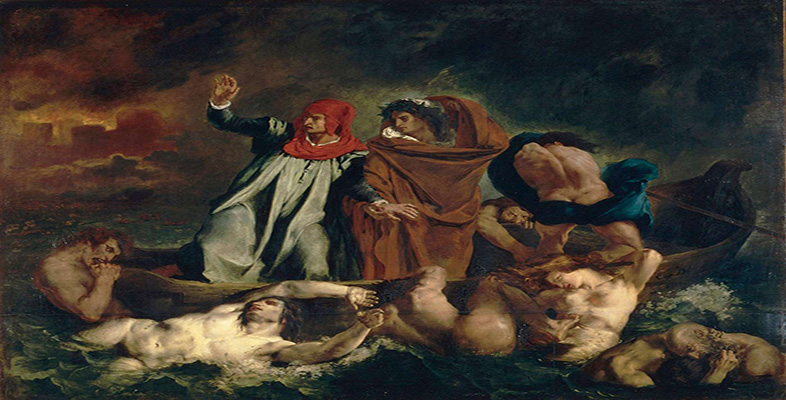4.3 Delacroix – sensitivity and suffering
Although in public Delacroix assumed the demeanour of the accomplished socialite (he dined regularly with Hugo, Alfred de Musset and other writers, and was friendly with Chopin and George Sand, among others), his letters and journal entries speak of a keen sensitivity that, he believed, infused his art and set him apart from ‘the common herd’:
As soon as a man is intelligent, his first duty is to be honest and strong. It is no use to try to forget, there is something virtuous in him that demands to be obeyed and satisfied. What do you think has been the life of men who have raised themselves above the common herd? Constant strife. Struggle against the idleness that is common to them and to the average man, when it is a question of writing, if he is a writer: because his genius clamors to be manifested; and it is not merely through some vain lust to be famed that he obeys it – it is through conscience. Let those who work lukewarmly be silent: what do they know of work dictated by inspiration? This fear, this dread of awakening the slumbering lion, whose roarings stir your very being. To sum up: be strong, simple, and true; there is your problem for all times, and it is always useful.
(Pach, 1938, p.94)
Delacroix was dedicated to hard work and the conquering of natural idleness. The extract above from his journal shows how a large part of that work involved an authentic expression of the ‘slumbering lion’ of inspiration. This involved suffering. The notion of the solitary, suffering artist was familiar to the Romantic côterie of Delacroix’s day. Delacroix himself captured the type in a painting entitled Torquato Tasso in the Hospital of Saint Anna, Ferrara (1824). In this painting Tasso, the sixteenth-century Italian poet and author of Jerusalem Liberated, an epic about the crusades, is confined to the madhouse. Tasso’s status as persecuted, misunderstood artist is implicit in the story told in a play by Goethe translated into French in 1823. The poet was locked up because of his love for the sister of the Duke of Ferrara. The type of the solitary genius is also expressed in Delacroix’s laterMichelangelo in his Studio(1849–50) and in his portrait of Paganini (1831) (see Plates 24 and 25), as well as in the work of one of the artist’s favourite writers, Byron:
To fly from, need not be to hate, mankind.
All are not fit with them to stir and toil,
Nor is it discontent to keep the mind
Deep in its fountain, lest it overboil
In the hot throng.
Click to see Plate 24: Eugène Delacroix, Michelangelo in his Studio [Tip: hold Ctrl and click a link to open it in a new tab. (Hide tip)]
Click to see Plate 25: Eugène Delacroix, Portrait of Niccolò Paganini
Expressing one’s identity and inspiration was not simply, however, a matter of spontaneity, of (for example) dashes of paint transferring to the canvas an inner essence or soul. In a Romantic work, and contrary to the pronouncements of many critics, nothing could be so transparent, not even the identity of the artist. Think of that quintessential quality of the Byronic, the ‘secret language’ in which only special souls may share.
